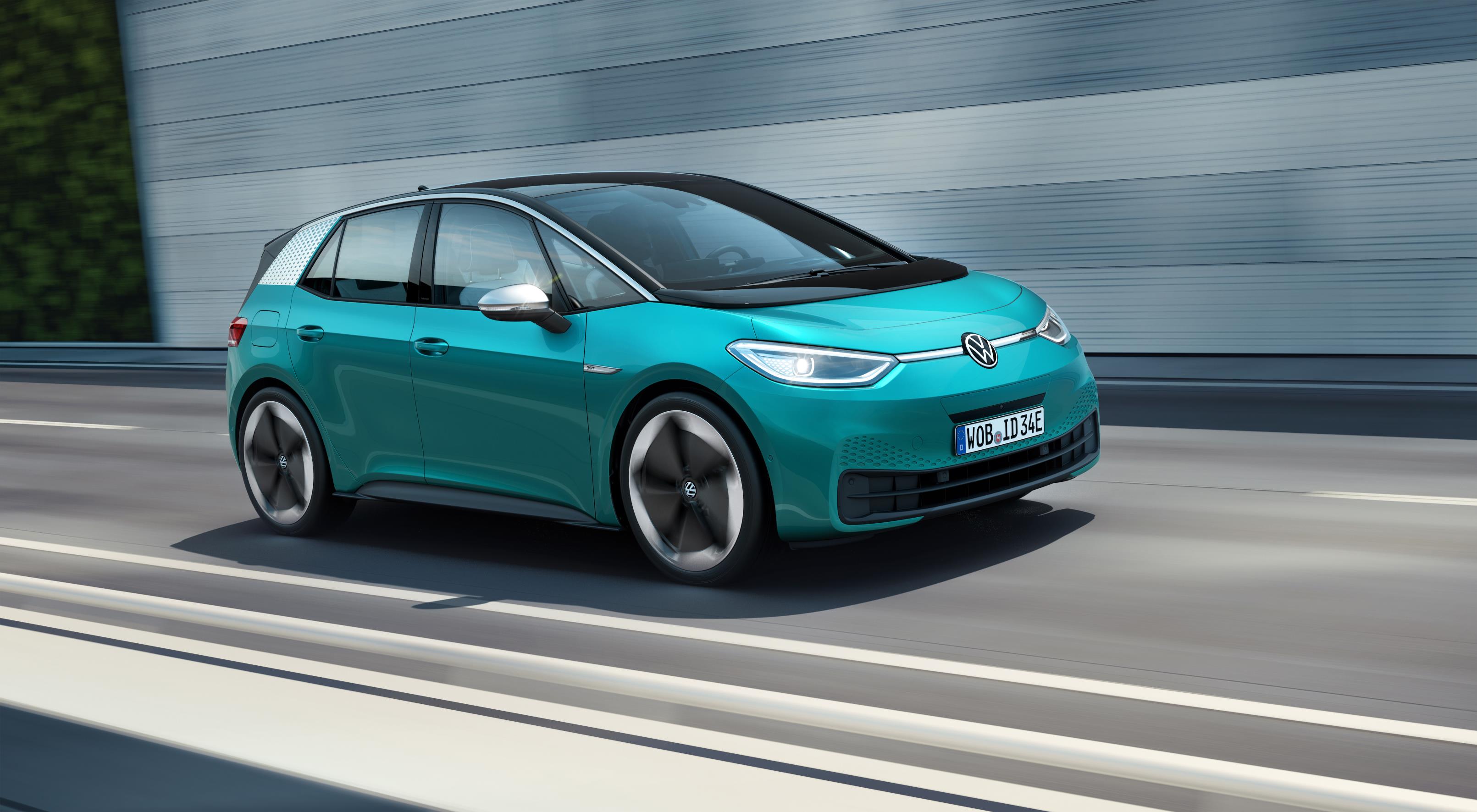
Note: the ID.3 will not go on sale in North America.
- World premiere: With the ID.3, Volkswagen presents the first electric vehicle built on the MEB modular toolkit
- Long range: scalable battery system offers ranges of up to 550 kilometers
- Electric mobility for all: the basic version of the ID.3 is priced under €30,000
- Sustainable mobility: battery, supply chain, production—the ID.3 is delivered to customers as the first Volkswagen product with a CO2-neutral balance
Wolfsburg/Frankfurt — Volkswagen and its customers are launching into a new era of environmentally friendly mobility and will showcase the fully electric ID.3 at IAA 2019. The first model from the MEB product line for electric vehicles demonstrates a CO2-neutral balance and impresses with the high levels of driving dynamics characteristic of electric cars. It has been fully networked and, in the ID.3 1ST special edition, enables electrically powered ranges of up to 420 kilometers (WLTP) with initially three equipment variants. All ID.3 1ST models feature the most popular battery variant that provides a usable energy content of 58 kWh. The series production version will later also offer a smaller battery option with an energy content of 45 kWh and a range of up to 330 kilometers as well as a larger battery with an energy content of 77 kWh and a maximum range of 550 kilometers. Thanks to its fast charging capability, at a charging output of 100 kW it is possible to recharge the ID.3 1ST with enough energy within 30 minutes to cover a range of around 290 kilometers (WLTP)—a significantly longer range than had previously been possible in the compact vehicle segment.
Volkswagen will offer a guarantee of eight years or 160,000 kilometers on ID.3 batteries, thus safeguarding longevity. The ID.3 also signals visually that it is more than just a new model. Its visionary design clearly indicates the new era of electric mobility, while its spatial arrangement fully benefits from design advantages provided by electrically driven vehicles. With external dimensions comparable to the Golf, the ID.3 provides a vehicle interior that is larger than that in any other vehicle in its category. As the basic price for the series production model will be under €30,000 in Germany, the vehicle’s price will be comparable to that of typical compact vehicles following the deduction of the anticipated government subsidies—an electric car for the masses. Particularly noteworthy is its unique price-range ratio that is possible solely as a result of Volkswagen’s consistent strategic alignment towards electric vehicles and the associated scaling effects. The ID.3 will be delivered in Germany from mid-2020.
Opportunity for mobility with a CO2-neutral balance. The ID.3 not only offers a completely new vehicle concept, but also gives drivers and passengers the opportunity of mobility with a CO2-neutral balance providing the battery is consistently charged with naturally produced energy. Consequently, the ID.3 embodies the new Volkswagen mission statement: “goTOzero”: by 2050 the entire Volkswagen Group aims to demonstrate a CO2-neutral balance. The Volkswagen brand alone will invest around nine billion euros in electric mobility by 2023 and produce more than ten million electric vehicles over the next ten years; more than 20 e models are planned. With Elli, Volkswagen Group already offers renewable Volkswagen energy today and is committed to establishing the charging infrastructure.
First electric vehicle on the basis of the new MEB platform. The ID.3 is the first Volkswagen based on the newly developed, modular electric drive matrix – abbreviated to MEB. All future ID. models will also be exclusively available with fully electric drive. This drive has been optimized around the battery to achieve maximum ranges while keeping costs to a minimum. Thanks to the design approach there are also numerous benefits in terms of the package, i.e. the arrangement of drive components and auxiliary units as well as the space arrangements in the vehicle interior. The ID.3’s electric drive primarily consists of the permanent-magnet synchronous motor including power electronics and gearbox, which have been integrated into the rear axle. A high-voltage flat battery that has been efficiently arranged in the underbody to save space, as well as auxiliary units, such as air conditioning compressor or steering rack, that have been integrated into the vehicle front end. The power electronics control the high-voltage energy flow between motor and battery and in this process, the system converts the direct current (DC) stored in the battery to alternating current (AC) for the drive motor. The 12 V DC electrical system is simultaneously supplied with low voltage by a DC/DC converter. Power is transmitted from the motor to the rear axle using a 1-speed gearbox. Motor, power electronics and gearbox form a compact unit. The position of the battery in the underbody has a positive effect on the neutral handling characteristics, as it causes the ID.3’s center of gravity to be very low, like in racing cars. The ID.3 is also characterized by ideal weight distribution between front axle and rear axle. In combination with the standard rear-axle drive this results in outstanding performance.
First model of an entire family. The ID.3 is the first vehicle of an entire family and all members of the Volkswagen ID. range will feature the ID. designation. Its clear objective is to help electric mobility break through on the mass market. ID. stands for intelligent design, identity and visionary technologies. In this process, ID. is not an abbreviation for a certain term, but rather symbolically represents the various properties united in these vehicles: automated driving with zero emissions, intuitive operation and personalized networking.
Bringing sustainability to life. The ID.3 is Volkswagen’s first vehicle produced with a carbon-neutral balance along the entire supply chain. Sustainability is already brought to life with battery production: consequently, cell production facilities for batteries in the ID.3 exclusively use naturally produced energy, as do component production, body manufacture, the paint shop and assembly facilities of the ID.3 at the Zwickau plant. The Saxon Volkswagen plant is the pilot factory for the ID.3. It has been externally provided with renewable energy generated by hydroelectric power stations since 2017. However, should CO2 emissions be unavoidable along the supply chain, these will be compensated by investments in climate protection projects. In this way, dealerships will be able to handover the ID.3 to customers as a product with a CO2-neutral balance. In an effort to also retain a CO2-neutral balance during the usage period, ID.3 drivers can then make use of Volkswagen subsidiary Elli’s comprehensive range—from naturally produced energy agreements for homes to charging points at all 4,000 European Volkswagen dealerships and service centers. In addition, the joint venture Ionity, in which Volkswagen owns a stake, aims to install 400 ultra-fast charging stations along main European routes by 2020 that use 100 percent renewable energy—providing it is available in the respective country. Volkswagen is also working on a secondary usage concept for high-voltage batteries as part of stationary operation. Furthermore the company is developing closed loop recycling concepts to be able to guarantee carbon-neutral balance characteristics at the end of the vehicle’s service life.
Free energy for the ID.3 1ST. Volkswagen WeCharge provides buyers with the option to charge their ID.3 1ST vehicles free of charge for one year from the first day of vehicle registration up to a maximum of 2,000 kWh. This applies to all charging stations linked to WeCharge including the Ionity network which amounts to more than 100,000 charging points throughout Europe.
Visionary design. Thanks to its newly developed design DNA, the ID.3 is immediately identifiable as a zero emission vehicle—with the potential of becoming a new automotive icon. Most of all, its innovative merging of design and technology puts the ID.3 on the same level as the iconic Beetle and Golf. It demonstrates the design of a new era and links its natural shape and intuitive usability with the characteristic Volkswagen smile. Designed for an electrifying future, it brings a new design quality to the compact vehicle category thanks to perfect, seamless aesthetics. For example, following the concept of “light is the chrome of the future”, the vehicle uses LED lighting in multiple areas to stage the ID.3 design. Most importantly, the ID.3 sends a signal: the ID.3 interacts with people. This is consistent with a clear, reduced style, maximum precision of all components, a charismatic front section, iconic, striking C-pillars, flowing surfaces and emphatic, expressive wheels featuring sporty, 18-, 19- or 20-inch light-alloy wheels that promise a completely new driving experience from the outset. “With the ID.3, Volkswagen is heading towards the future”, explains Klaus Bischoff, Head Designer of the Volkswagen brand. “The natural style and absolutely intuitive user experience demonstrate a new, electric way of thinking.”
Front end: look into my eyes. An electric vehicle does not require large cooling ports. And consequently almost everything changes in terms of the front end design. With its Beetle and Bus, Volkswagen is the automotive brand whose original design did away with front-facing cooling grilles. Details, such as the headlights, are thus lent primary significance. In the ID.3, the once static headlights make way for interactive matrix LED headlights with a light output of 750 lumen and Dynamic Light Assist main-beam control: a camera on the windscreen analyses road users ahead as well as oncoming traffic. On the basis of this data, the main beam automatically switches on at speeds over 60 km/h and remains active without dazzling oncoming traffic. This noticeably improves the illumination of the road surface and the side of the road at dawn and at night. A further highlight of the matrix LED headlights is when drivers approach a parked ID.3 1ST, its headlights will briefly look at them and “flutter the eyelids”—friendly and with a human touch.
Outline: new proportions. Viewed from the side, the ID.3 is clearly dominated by completely new proportions and a new style. Its short overhangs can only be achieved by the fully electrical platform. The long wheelbase stretches the vehicle and lends it a strong presence. The design is dominated by high levels of precision, clarity and a visionary force. The flowing surfaces of the outline below the main design line form an overall harmoniousness that is almost sensual. The diamond-shaped “ID. Honeycomb” foil at the C-pillar is a striking design element inspired by honeycomb—one of nature’s most impressive shapes. Honeycomb is super-light, extremely stable and absolutely sustainable and thus symbolizes the basic idea of the MEB platform. Its design resembles the same principle as honeycomb: always with an identical structure and suitable for individual enhancements at any time.
Rear end: distinctive perspective. The glass hatch lid is set apart by its dark color. It stretches across the entire width of the vehicle. The large rear window is defined towards the sides by vertical aerodynamics elements; towards the bottom, the section is divided by striking, horizontally arranged and very slim LED tail light clusters. The ID.3 1ST’s glossy, panorama sliding/tilting glass roof edged in black is the largest of the entire Volkswagen model range and not only gives a view to the sky, but also adds headroom – contributing to a new feeling of spaciousness.
Compact dimensions. The ID.3 applies the design liberties of an electric vehicle in an uncompromising way. All in all, it is approximately as long as a Golf, but thanks to its shorter overhangs, its wheelbase is larger than that of any other vehicles in its category. Expressed in figures this means that the four-door ID.3 is 4,261 mm long, 1,809 mm wide and 1,552 mm high, with a wheelbase of 2,765 mm. In keeping with the DIN standard, its minimum curb weight is 1,719 kilograms and the maximum load capacity is between 416 and 541 kilograms, depending on the vehicle’s equipment. Its end face is merely 2.36 square meters in size, delivering a drag coefficient of 0.267. The ID.3’s turning circle is also a mere 10.2 meters—comparable with that of a small car and ideally suited for urban environments. Anyone seeking to transport their bicycle with the ID.3 can do so using a special towing bracket suitable not only for installing a bicycle carrier, but also other transport carriers and providing a vertical towbar load of 75 kilograms.
Revolutionary interior concept. No center tunnel, shorter overhangs: the Open Space interior of the ID.3 provides a surprisingly large amount of room and sets new benchmarks in the compact vehicle category, thanks to a spatial feeling comparable to that in the lower, mid-range segment. The five seats of the ID.3 1ST are complemented by a boot volume of 385 liters behind the second row of seats. Guests travelling in the ID.3 find themselves in a mobile space with a completely new concept, layout and design. Volkswagen calls it Open Space—a pure, airy space. The sculptured, flowing surface structure has been inspired by nature’s shapes—bionic design rather than rational technology. Thanks to its organically shaped surfaces and soft curves, the design emphasizes openness.
Intuitive operation. The ID.3 interacts with the driver and the environment. Drivers will intuitively and immediately know what is what within the cockpit. Apart from the display in the cockpit, a newly developed, centrally positioned, ten-inch touch display provides drivers with all important information. ID. Light supports drivers with an LED strip during navigation and can, for instance, prompt them to brake in the event of any dangers. An optional augmented reality (AR) head-up display also projects all relevant information directly onto the windscreen—this information is visually positioned within a range of three to ten meters ahead of the vehicle. All controls—including those on the electrically adjustable multifunction steering wheel—are operated using touch functions featuring touch-sensitive buttons. Only the electric windows and hazard warning lights are still operated using tactile switches. This is supplemented by intelligent natural voice control. Drivers or front passengers can speak to the ID.3, simply by saying “hello ID.”. Visually, ID. Light signals to whom the ID.3 is currently responding. Thanks to App-Connect, you can also connect the ID.3 to a smartphone within seconds.
Fully fledged assistance. Assistance functions are supported by a multifunction camera on the windscreen that also identifies road signs. Comfort and safety functions in the ID.3 include Front Assist with City Emergency Braking System and Pedestrian Monitoring, multicollision brake and Lane Assist lane keeping system, Side Assist lane change system, Park Assist including rear view camera system as well as a keyless access system (Kessy Advanced) featuring illuminated door handles. Thanks to standard Park Distance Control featuring maneuver braking, the system largely prevents parking mishaps: the function can prevent impending collisions or reduce the severity of collisions by triggering an emergency braking maneuver at the latest possible point. The system brakes the vehicle to standstill—when reversing within a range of between 1.5 km/h and 10 km/h and when driving forwards at speeds of between 2.5 km/h to 10 km/h.
Pure infotainment. The multimedia system of the ID.3 features a navigation system that can be updated. The convenience telephony function also involves inductive charging for smartphones. The sound system can be enhanced by a Beats package, which offers an audio atmosphere like at a live concert—using eight loudspeakers plus a subwoofer.
ID.3 1ST special edition with three equipment lines. The ID.3 1ST will be offered in three fixed configurations that are geared towards typical customer demands. Apart from that, the paintwork color and the vehicle interior’s color can be selected. The ID.3 1ST is driven by an electric motor at the rear axle. It generates 150 kW and delivers a maximum torque of 310 newton meters. Consequently the ID.3 1ST reaches a top speed of 160 km/h. The ID.3 1ST features a battery with an actual usable energy content of 58 kWh as well as an electric range of up to 420 kilometers as per WLTP. The battery can be recharged with a maximum charging output of 11 kW (AC) and 100 kW (DC). With DC charging, it is possible to recharge enough energy to cover a range of 290 kilometers within 30 minutes.
The basic version of the ID.3 1ST includes a navigation system, a DAB+ digital radio, seat heating and steering wheel heating, armrests at the front, a Mode 2 charging cable and 18-inch light-alloy wheels—comparable with Comfort equipment in the compact vehicle segment.
The ID.3 1ST Plus additionally features a rear view camera system, Adaptive Cruise Control and the Kessy Advanced keyless access locking and starting system. The vehicle interior of the ID.3 1ST Plus also includes design seats, a center console (including two USB-C connections at the rear that can be locked with a roller shutter and feature lighting) as well as ambient lighting. On the outside, tinted windows, the exterior Style package in silver, matrix LED headlights, matrix side lights, brake lights, turn indicators and tail light clusters as well as 19-inch light-alloy wheels also form part of the equipment scope.
The top-of-the-range version, the ID.3 1ST Max, also includes the augmented reality (AR) head-up display, the Beats sound system, a large panorama sliding/tilting glass roof to underline the feeling of space as well as 20-inch light-alloy wheels. This equipment scope is supplemented by a lane keeping system with Emergency Assist, a lane change system, comfort telephony featuring contactless high-voltage battery charging, comfort seats, a level luggage compartment floor and large 20-inch light-alloy wheels.
Three battery sizes at series production launch. At series production launch the ID.3 will be available with three battery sizes. The ID.3 1ST special edition model is based on the mid-range battery variant.
It will be complemented by a basic variant at a later point. Its battery delivers a usable energy content of 45 kWh and enables an electrically powered range of up to 330 kilometers as per WLTP. The battery can be recharged with a maximum charging output of 7.2 kW (AC) and 50 kW (DC). 100 kW DC charging is optionally also available. The vehicle’s basic model also reaches a top speed of 160 km/h.
The largest battery variant’s actually usable energy content is 77 kWh and the electrically powered range is up to 550 kilometers as per WLTP. The battery can be charged at an AC power source with a maximum charging output of 11 kW and with up to 125 kW at a DC power source.
Ranges that meet customer demands. The forecast ranges have been determined by completing worldwide harmonized light vehicle test procedure (WLTP) cycles on test rollers. The actual range in practical application deviates as a result of factors including driving style, speed, use of convenience and auxiliary consumers, outside temperature, number of occupants, the load carried in the vehicle as well as the topography. Depending on the usage profile, 80 percent of drivers will still be able to cover between 230 and 330 kilometers with the smaller battery variant (45 kWh, net), between 300 and 420 kilometers with the mid-range battery variant (58 kWh, net) and between 390 and 550 kilometers with the largest battery variant (77 kWh, net) without having to recharge. The lower limit of the range consequently also covers journeys at moderate motorway speeds and trips in winter at low ambient temperatures. It goes without saying that trips in urban environments in particular enable a range over that stated as per WLTP.
Convenient charging with the Volkswagen wall box. At the launch of the ID.3, Volkswagen is offering charging stations to recharge at home. The ID. Charger will be available in two versions generating different charging outputs. The charging station is optionally also available with data link and remote access, if required also with an integrated electricity meter. Depending on the version, the units also include Connectivity functions, such as app control or remote servicing. Once installed, ID.3 drivers can thus simply and conveniently connect and charge the car overnight. In terms of pricing, all wall boxes will be made available at prices significantly under those common on the market nowadays.
PRODUCTION OF ID.3 AT ZWICKAU PLANT TO START IN NOVEMBER
- World premiere on September 9 at IAA in Frankfurt
- Zwickau to become the largest and most efficient electric car plant in Europe
- 400 pre-series models of the ID.31 already produced
- E-Mobility Board Member Thomas Ulbrich: “Our conversion work is proceeding entirely to schedule.”
Zwickau/Wolfsburg – The countdown is running: series production of the ID.3 is to start at the Zwickau vehicle plant in November. Currently, the last robots are being installed and the assembly line is being commissioned. The ID.3 is the first model in an entirely new generation of electric cars based on Volkswagen’s Modular Electric Drive toolkit (MEB). The ID.3 is making its world debut on the evening of September 9 at the International Motor Show in Frankfurt (IAA). The first vehicles are to be delivered to customers next summer. With the ID.3, Volkswagen is launching the largest electric offensive in the automotive industry worldwide. In the next three years alone, production of a total of 33 models based on the MEB, spread across all the Volkswagen Group’s volume brands, is due to start.
“The production start of the ID. 3 in November will usher in an entirely new era for Volkswagen – comparable with the first Beetle or the first Golf. Our conversion work is proceeding entirely to schedule. The first 400 pre-series ID. 3 vehicles are already on test routes throughout Europe. With the ID.3, Zwickau will become a genuine pioneer of e-mobility,” says Thomas Ulbrich, Member of the Volkswagen brand Board of Management responsible for E-Mobility.
Comprehensive conversion of the Zwickau vehicle plant
At Zwickau, Volkswagen is converting an entire vehicle plant from 100 percent internal combustion engines to 100 percent electric vehicles for the first time. The changeover to electric vehicles already started at the beginning of 2018 and is to be completed by the end of 2020 within the space of about three years. The body shop and the paint shop have already been largely prepared for ID.3 production. The first of two final assembly lines has already been completed. It is here that production of the ID.3 will start in November; production will then be ramped up step-by-step. A total of 12 entirely new buildings or parts of buildings are currently under construction at the plant site. The existing press shop alone has already been extended and prepared for the new era for a total investment of €75 million. This means that the Zwickau plant will be able to produce all the key body parts for MEB vehicles on site from 2021.
The second assembly line at Zwickau is to be modified from the summer of 2020 and to be commissioned the same year. In the final stage of development, six models based on the MEB are to be produced at Zwickau for three Group brands from 2021. The production capacity is to be boosted from 300,000 to 330,000 vehicles per year. This will make Zwickau Europe’s largest and most efficient electric vehicle plant. All in all, Volkswagen is investing about €1.2 billion in the transformation of this location. Investments completed to date total about €800 million.
On the way to a high-tech factory
Over the past few months, more than 1,600 production robots of the latest generation have already been installed. Especially in final assembly, entirely new technologies, such as the automated installation of the roof liner, are to be used. In future, Zwickau will be able to produce about 150 cars per day more than before the transformation as a result of the growing degree of automation – 1,500 instead of 1,350. The workforce will remain largely stable.
At Zwickau, a total of 8,000 employees are preparing for the start of the electric era. In special high-voltage training, they are learning how to handle modern battery systems and electrical wiring safely and correctly. To date, about 8,000 of the total of 13,000 training days required have already been completed. More than 2,500 employees have already been qualified for e-mobility.
ID.3 celebrates world premiere at the IAA
The ID.3 is being presented to a global public for the first time at the 2019 International Motor Show (IAA) in Frankfurt. The delivery of the first vehicles is planned for the summer of 2020. Initially, vehicles will be delivered to the customers who already reserved an early production slot for the first edition of the ID.3 during the pre-booking campaign. More than 30,000 reservations have already been received.
1) This vehicle is not yet for sale in Europe

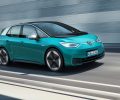
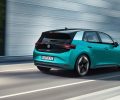
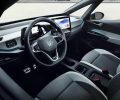
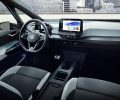
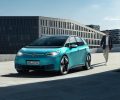
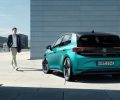
You must be logged in to post a comment.